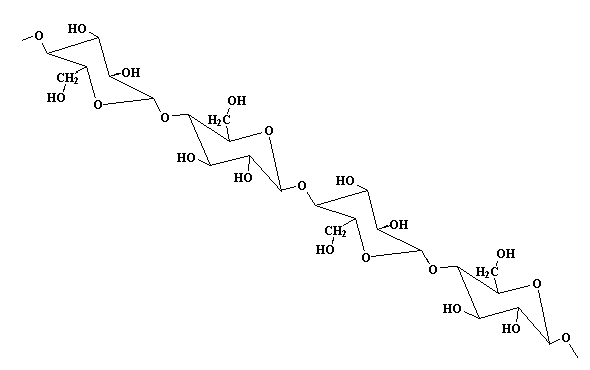Oil is made of dead plants and plankton from millions of years ago. It has carbon and Oxygen in it. It is a fossil fuel that is used everyday in America. When it is spilled it is very hard and expensive to clean it up and can hurt the environment. The waste from the paper mill is made of cellulose, calcium carbonate, silicon and aluminum. This waste is very difficult to get rid of because there is no use for it. Most mills just burn it, which is hard because about 40% of it is left over as ash, or they but it in large holding tanks with water and algae to decompose it. The problem with decomposing it is it leaves a stench. So whatever the paper mill does it has a negative effect.
Oil is a non-polar substance. A non-polar substance means it is a hydrophobic, or "fearing" of water. This means that it does not dissolve or join with water.
All of the carbons are taken by a hydrogen, so there is no where for the water hydrogen's to attach.
Each cellulose has an extra oxygen that can bond to a hydrogen. Oil is made of hydrocarbons. Since most of the paper waste is made of cellulose it absorbs very well. Cellulose is made of carbon's, hydrogen's, and oxygen's. The oxygen's in the cellulose like to attract to a hydrogen. Since oil has hydrogen's in it the cellulose pulls the oil into it and the oxygen and hydrogen bond together. This is why oil can be absorbed by the waste.
For my test I took 100ml of oil and filled a pant hoe full with the waste. I then tied both ends and had a sack full of my waste. I then weighed the sack and had 115.422g. Then I weighed a beaker which was 122.006g. I added 100ml of oil into the beaker and it weighed 202.34g. This gave me 80.334g of oil. I then went outside and poured the whole beaker onto the ground, and rolled my sack of waste into the puddle that formed. I then brought it back inside to weigh it and see how much oil I had picked up. I weighed a beaker(146.78g) and added the sack(310.07g) and found I had successfully absorbed 47.868g of oil. This was a little over 60% of the oil that was spilled.
By using the mill waste I was successfully able to absorb most of the oil. This can be a cheap and easy way to clean up oil spills at home or even on the road when oil trucks crash and spill. The best part is you can squeeze the sack and get some oil back. There is no hurt to the environment because the waste is made of cellulose which is in trees and plants. A limitation for my idea is making it on a larger scale. If you had a whole tank truck tip and leak oil we could not use a single sack to clean it up. Also, because of the lab I was working in I had no way to test if the oil that was squeezed out would be usable again. Further study would also be needed to try and get the percent of oil collected closer to 100%. If I used a sack with cellulose in it it would aide in the absorption of the oil.



Nice job, Matt! Any ideas on where you might start to get the percent oil collected to be higher?
ReplyDelete